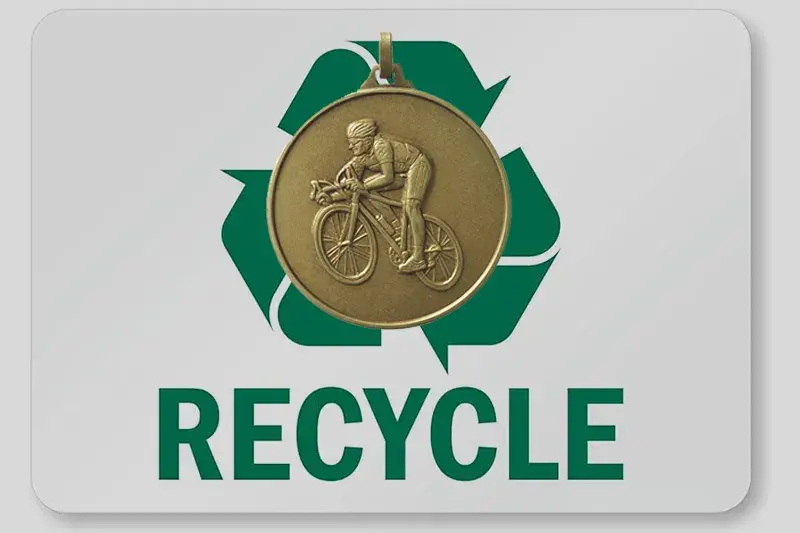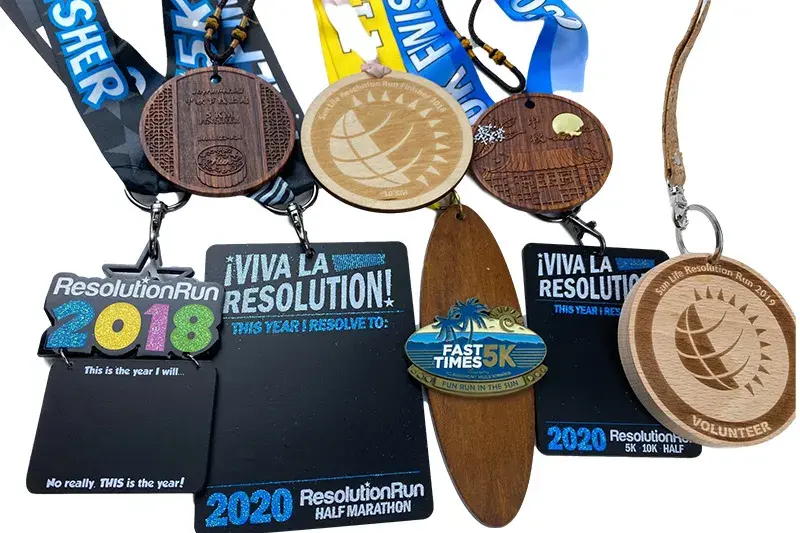In our increasingly eco-conscious world, even the sports industry is seeking ways to minimize its environmental footprint. One innovative approach gaining momentum is medal recycling. By repurposing old medals, we can conserve resources, reduce waste, and foster a greener future. This detailed guide explores what can and cannot be recycled in terms of medals, offers practical shipping tips, and covers additional aspects of this eco-friendly initiative.
Understanding Medal Recycling: The Basics
Medal recycling involves collecting old, unused, or unwanted medals and transforming them into new awards. This process helps reduce the demand for new raw materials, conserving resources and minimizing environmental impact. However, not all medals are recyclable. Understanding what can be recycled is crucial for effective recycling.
The Materials in Medals
Medals typically consist of various metals, such as zinc alloy, gold, silver, bronze, and sometimes platinum. These metals can often be recycled and reused. However, some medals contain non-recyclable materials like plastics or other non-metallic elements, making them harder to recycle.
Recyclable Components
Medals primarily made of metals like gold, silver, and bronze are generally recyclable. These metals can be melted down and repurposed without significant quality loss. Even the ribbons attached to medals, often made of polyester, can be recycled if processed correctly.
Non-Recyclable Components
Medals incorporating plastics, resins, or other non-metallic elements pose recycling challenges. These components cannot be melted down like metals and usually end up as waste. Therefore, separating these materials from the metals before recycling is essential.

How to Prepare Medals for Recycling
Preparing medals for recycling is straightforward, but attention to detail can ensure materials are correctly processed.
Cleaning and Sorting
First, clean the medals to remove any dirt or grime. Then, sort them by material type, as different metals may require different processing techniques.
Removing Non-Metal Components
Carefully remove any non-metal components, such as plastic inserts or fabric ribbons, and dispose of them according to local waste management guidelines.
Documentation and Record-Keeping
Maintain records of the medals you send for recycling. This helps track your sustainability contributions and can be useful for any reporting or verification processes.
Shipping Tips for Medal Recycling
Shipping medals for recycling requires careful planning to ensure they arrive safely and in good condition.
Packaging Tips
Use sturdy, eco-friendly packaging materials to protect the medals during transit. Consider padded envelopes or boxes with ample cushioning to prevent damage.
Labeling and Documentation
Clearly label the package with the contents and destination address. Include any necessary documentation, such as a list of items being shipped and their respective materials.
Choosing a Shipping Service
Select a reliable shipping service that offers tracking and insurance options. This ensures that the medals can be traced and any potential issues can be resolved quickly.
Benefits of Medal Recycling
Recycling medals offers numerous environmental and economic benefits, contributing to sustainability.
Environmental Impact
Recycling medals reduces the demand for new raw materials, conserving natural resources. It also decreases the energy consumption and greenhouse gas emissions associated with mining and processing metals.
Economic Advantages
Recycling metals is often more cost-effective than extracting and processing new materials. This can lead to significant savings for organizations that produce medals, as well as reduced costs for consumers.
Promoting Sustainability in Sports
Recycling medals sends a powerful message about the importance of sustainability in sports. It encourages athletes, organizers, and fans to adopt eco-friendly practices and support initiatives that protect the environment.
Challenges and Considerations
While medal recycling offers many benefits, it also comes with its own set of challenges and considerations.
Identifying Recyclable Medals
Not all medals are easily recyclable. Identifying those that can be recycled requires a good understanding of their materials. Collaborating with recycling experts can help ensure accurate sorting and processing.
Managing Contaminants
Contaminants such as dirt, grime, or mixed materials can complicate the recycling process. Ensuring that medals are clean and properly sorted before recycling can mitigate these issues.
Cost and Logistics
Shipping medals for recycling can be costly and logistically challenging, especially for large quantities. Planning and budgeting for these expenses is crucial for successful recycling efforts.

Innovative Solutions and Future Directions
The future of medal recycling looks promising, with innovative solutions emerging to address current challenges.
Advanced Recycling Technologies
New technologies are being developed to enhance the recycling of complex materials. These advancements could make it easier to recycle medals that currently pose challenges, such as those with mixed materials.
Circular Economy Initiatives
Promoting a circular economy in the sports industry involves creating systems where materials are continuously reused and recycled. This approach can significantly reduce waste and resource consumption.
Community Engagement and Education
Engaging communities and educating them about the importance of medal recycling can drive greater participation. Awareness campaigns and partnerships with schools, sports clubs, and organizations can help spread the message.
Conclusion
Medal recycling represents a vital step towards a more sustainable future in sports. By understanding what can and cannot be recycled, preparing medals properly, and following best practices for shipping, we can make significant strides in reducing waste and conserving resources. As technology and community engagement continue to evolve, the potential for medal recycling to positively impact the environment will only grow. Let’s champion this cause and lead by example, ensuring that our victories on the field are matched by our commitment to sustainability off the field.


